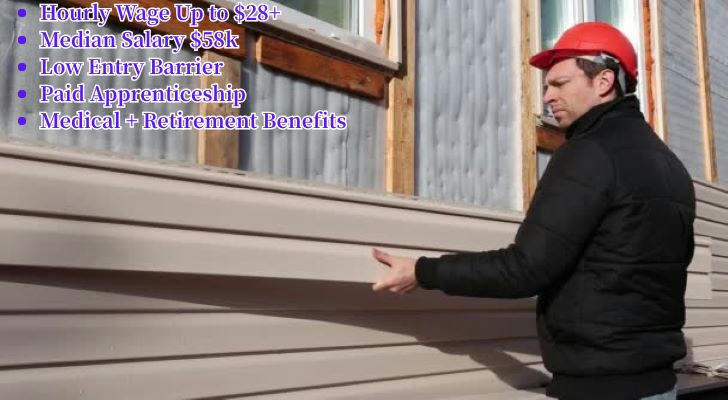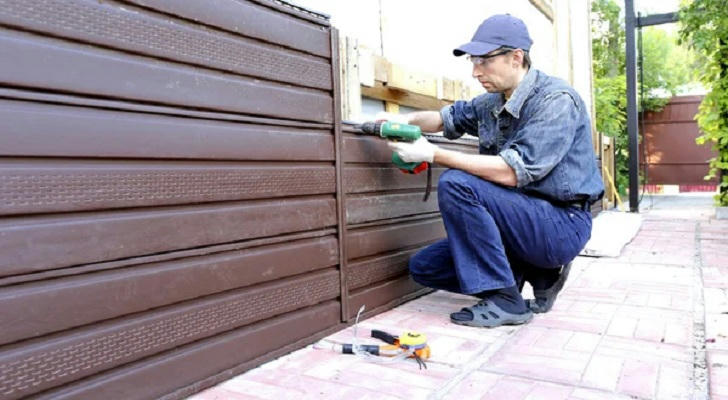Unlock a High-Reward Technical Career Become a Drywall Installer – Achievable from Entry-Level to High Income!
Hourly Wage Up to $28+ | Median Salary $58k | Low Entry Barrier | Paid Apprenticeship | Medical + Retirement Benefits | High-Demand, Long-Term Stability

Want to achieve stable income, avoid student debt, and enjoy career growth? Becoming a drywall installer is your path to freedom and prosperity!
1. Salary: More Lucrative Than Many White-Collar Jobs
1.1 Annual & Hourly Data
According to 2024 data, the median annual salary for Drywall Installers is $58,140 ($28.27/hour).
Master-level "Tapers" can earn up to $64,700/year.
Top 10% high-end technicians earn over $80,000/year – top performers easily cross this threshold.
Location impacts earnings: In high-cost states (WA, CA, HI), average salaries reach $75k–86k, with top 10% exceeding $95k+.
1.2 Apprentice vs. Junior vs. Senior
| Position Stage | Hourly Range | Annual Estimate | Description |
|---|---|---|---|
| Apprentice (0–1 yr) | $15–22 | $30k–45k | Learn on the job; start with material handling & simple tasks |
| Installer | $25–30 | $50k–60k | Independently install drywall & perform basic repairs |
| Senior Tech/Foreman | $30–45 | $60k–75k+ | Lead teams, manage complex projects; steady income growth |
| Contractor/Entrepreneur | $40–60+ | $90k+ | Self-employed; control profit margins; high freedom & ROI |
Early earnings outpace basic jobs, but skill advancement leads to exponential growth.
2. Stable Career with Strong Outlook
2.1 Job Growth: Steady & Sustainable
U.S. drywall installer roles projected to grow 3% (3,700 new jobs) from 2023–2033 – faster than average.
~9,800 openings/year expected, mostly due to retirements or exits.
2.2 Evergreen Construction Demand
New builds, renovations, and interior upgrades fuel a robust market.
Severe industry shortages make finishers high-need workers nationwide.
3. Low Entry Barrier: Earn-While-You-Learn Model
3.1 No College Degree Needed
- Most apprenticeships require only a high school diploma.
3.2 Paid Apprenticeship: Training + Benefits
Master drywall installation, taping, and sanding via 3–4 years of paid training.
Example: California apprentices start at $14.19/hour + $8.72/hr in benefits.
3.3 Fast Skill Acquisition
- As Reddit users report: “Mastered high-quality drywall in 3 months”; advancing to senior tech takes just a few years.
4. Comprehensive Benefits & Security
Most technicians enjoy full packages from contractors, unions, or employers, including:
Health/Dental/Vision Insurance: Full coverage for wellness.
Retirement Plans (401k/Union Pensions): Secure your future.
Paid Vacation/Sick Leave: Balance work and life.
OSHA® & Tool Insurance Training: Minimize on-site risks.
Professional Certs (EPA, OSHA, IUPAT): Boost hiring potential & wages.

5. Clear Career Path: Control Your Future
Dual Tracks: Master Craftsman or Entrepreneur
Progress from junior tech → foreman → project manager (overseeing teams & operations).
Launch your own company after gaining experience – profit potential soars.
Become a union trainer to mentor new talent.
High-Skill = High Pay
Luxury residential/commercial projects pay premiums – $100k+ achievable.
Top earners in CA/HI regularly exceed market rates.
6. Real Voices from the Field
“Mastered fine drywall in 3 months. After 12 years, I easily earn $60/hour.” — Reddit user at a ski resort.
“Started as an apprentice. In 3 years, I ran my own jobs, then built a crew. Now I clear 6 figures.” — Same thread.
“The biggest reward? Watching rough walls transform into smooth surfaces – you’re literally building homes.” — IUPAT member.
7. How to Start? 3 Steps to Launch Your Career
Step 1: Enroll in an apprenticeship or join a contractor.
→ Find paid programs via local unions, contractors, or trade schools.
Step 2: Sign a progressive wage contract.
→ Start at $15–22/hour, with raises tied to skills/hours worked.
Step 3: Complete safety certifications.
→ Boost employability with OSHA, EPA, or IUPAT courses.
8. Q&A: Quick Concerns Addressed
Q: Is it physically demanding?
A: Initially yes, but proper technique reduces strain. Rest/hydration prevent fatigue.
Q: Are projects stable year-round?
A: Yes – construction cycles ensure 40+ hours/week on average.
Q: Do I buy my own tools?
A: Not at first. Employers provide; later, buy or get subsidies.
Q: Can I freelance?
A: Absolutely! Transition to contracting or start your team.
9. Closing: Drywall Skills = Prosperity & Freedom
High skill = High pay: Outearn many white-collar professionals.
Low barrier: early, grow faster.
Full benefits: Health, retirement, and training secured.
Own your path: Advance from laborer → foreman → boss – step into professional excellence.
If you crave stability + control over your life’s pace, becoming a drywall installer is the smart move toward a secure future.
